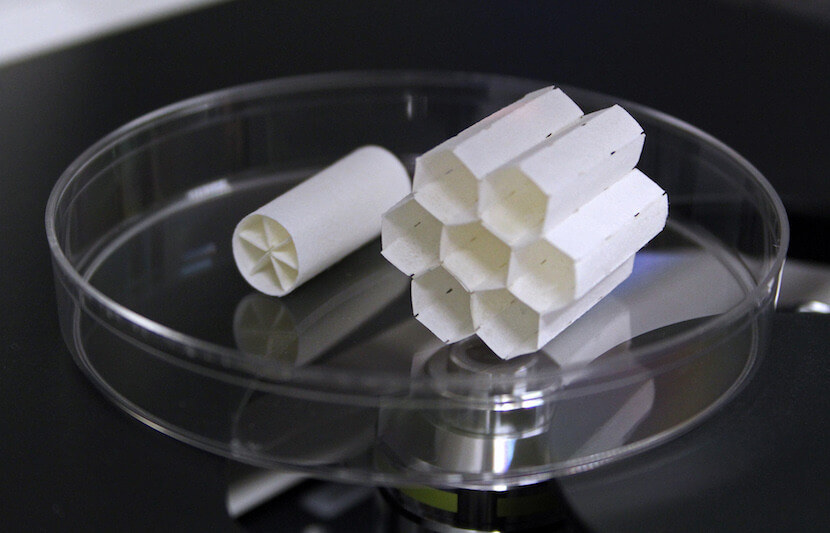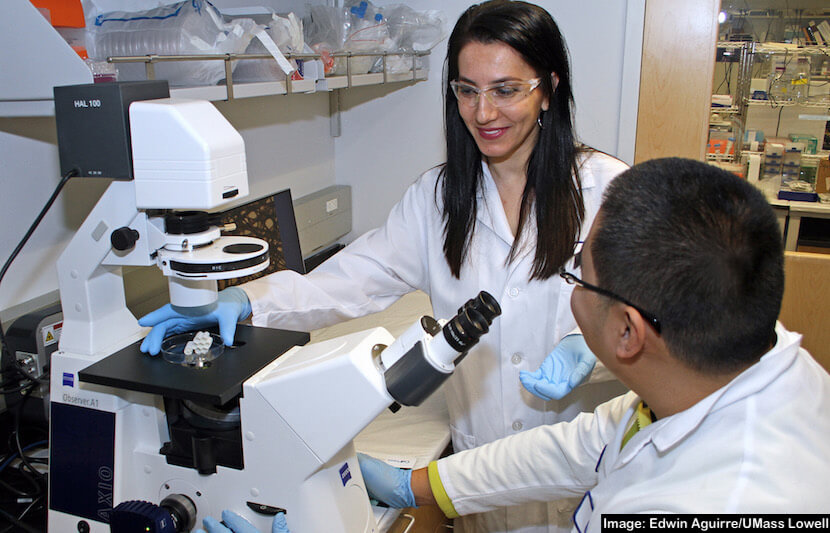Dating back to the sixth century, the Japanese paper art of origami is making its modern comeback, not in arts and crafts, but in an engineering lab.
Researchers at the University of Massachusetts Lowell are using origami papers to develop biomaterials that could be used to repair, replace or regenerate human body tissues and organs.
Their study is published in MRS Communications.
Tissue and organ donations
Across the country, shortage of tissue and organ donors is a major problem with grim consequences.
In 2018 so far, according to the U.S. Department of Health and Human Services, only 10 percent of those on the national transplant waiting list have received organ transplants. Every day, 20 people die each day waiting for a transplant.
To assist patients waiting helplessly for the next donor, researchers around the globe have come up with a number of engineering approaches to replace tissue and organ donation, such as stem cells, bioprinting tissue, and artificial organs. However, too many times, these alternatives are very expensive and inaccessible to many patients.
In her research, Gulden Camci-Unal, an assistant professor of chemical engineering at UMass Lowell and the study’s lead researcher, wondered if she could use origami papers to solve this problem.
“I was always fascinated by the fact that paper, a very simple material, can make such versatile and intricate structures,” she said. “Over time, I realized that origami is not only an amazing art but also it is possible to use its design principles for very interesting scientific applications in medicine, engineering, space technologies, architecture and math.”
Growing cells in origami papers
Camci-Unal and her team used plain paper as a three-dimensional biomaterial to create centimeter-scale scaffoldings where the cells can grow.
Using microfabrication techniques, they developed biomimetic scaffolds, three-dimensional template materials that resemble native tissues.
“These materials can be combined with cells that are obtained from the patient, cultured, expanded, grown, allowed to mature in a tissue incubator at physiological conditions and then implanted into the patient for tissue repair,” she said.
According to Camci-Unal, because they use specific cells from the patient, they expect their method to be free from immune-rejection problems.
“We anticipate that this approach will greatly help to generate new personalized treatment methods,” she said.

The advantages
So far, they have grown a number of different cell types using paper-based scaffolds, such as immortalized cell lines, human stem cells, and plant cells.
Most recently, using the method, the team successfully had bone cells deposit their minerals on origami-folded paper scaffolds. The paper then can be implanted to treat patients with bone defects of irregular sizes and shapes.
Also, they are using origami papers to learn about the behavior of lung cancer cells.
“Tumor biopsies from patients can be grown in our system and then these cells can be exposed to different chemotherapy drugs or radiation doses to find out which specific treatment would work best for the patient,” Camci-Unal said in a statement.
Besides tissue engineering and organ models, the team is using paper as a material for various biomedical applications, such as personalized medicine and disease diagnostics and wound care.
And all of this is possible mainly because of how accessible and abundant paper is.
“Paper is a low-cost and widely available substrate, which is virtually accessible to any lab all around the globe,” said Camci-Unal. “Paper is an extremely flexible material that can be easily cut, creased, folded, and manipulated to fabricate three-dimensional free-standing constructs. The resulting scaffolds are highly tunable in shape, size, and configuration.”
Also, the team’s research indicates the paper scaffold implants are biocompatible, which means they will not be rejected by the body’s immune system.
The next step
According to Camci-Unal, her team will continue to move forward with testing the origami-inspired tissue scaffolds for regenerative applications.
In the near future, they hope to bring this new technology to market for easy and low-cost access to patients.
“Using innovative ways to develop new biomaterials help us for achieving our ultimate goal: to improve human health and the quality of life,” said Camci-Unal.



